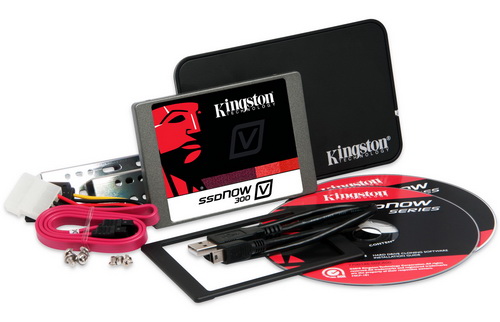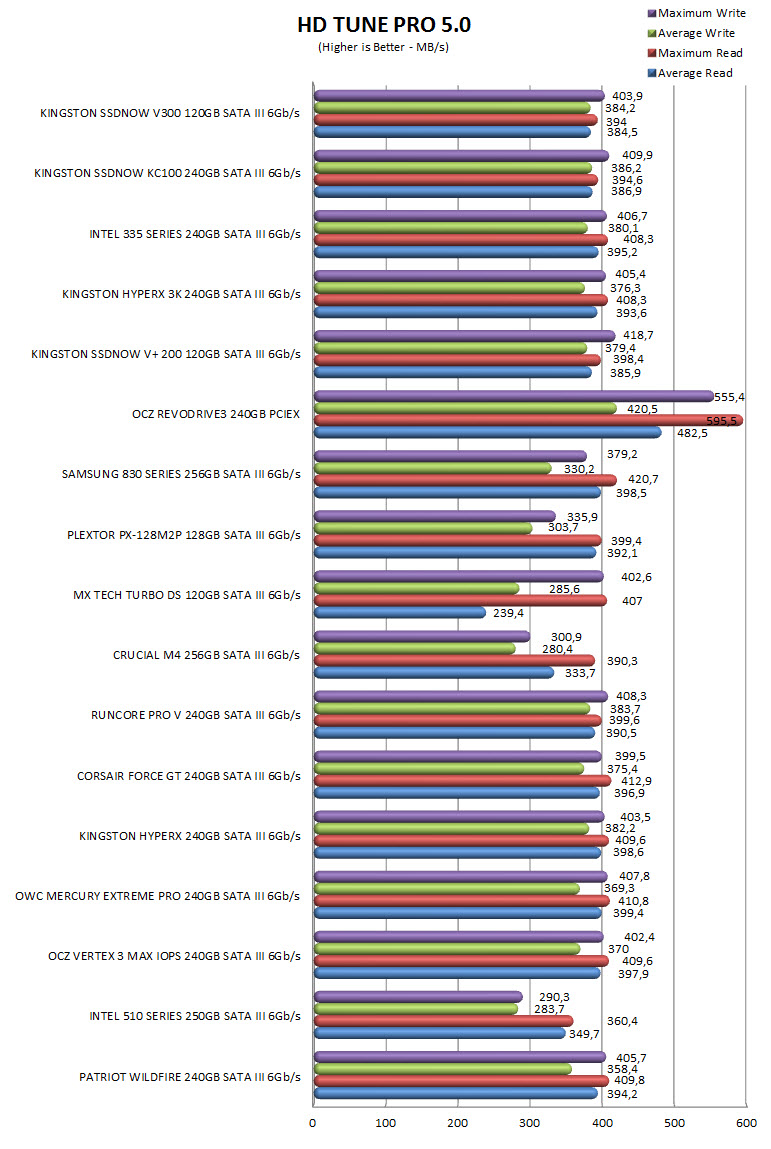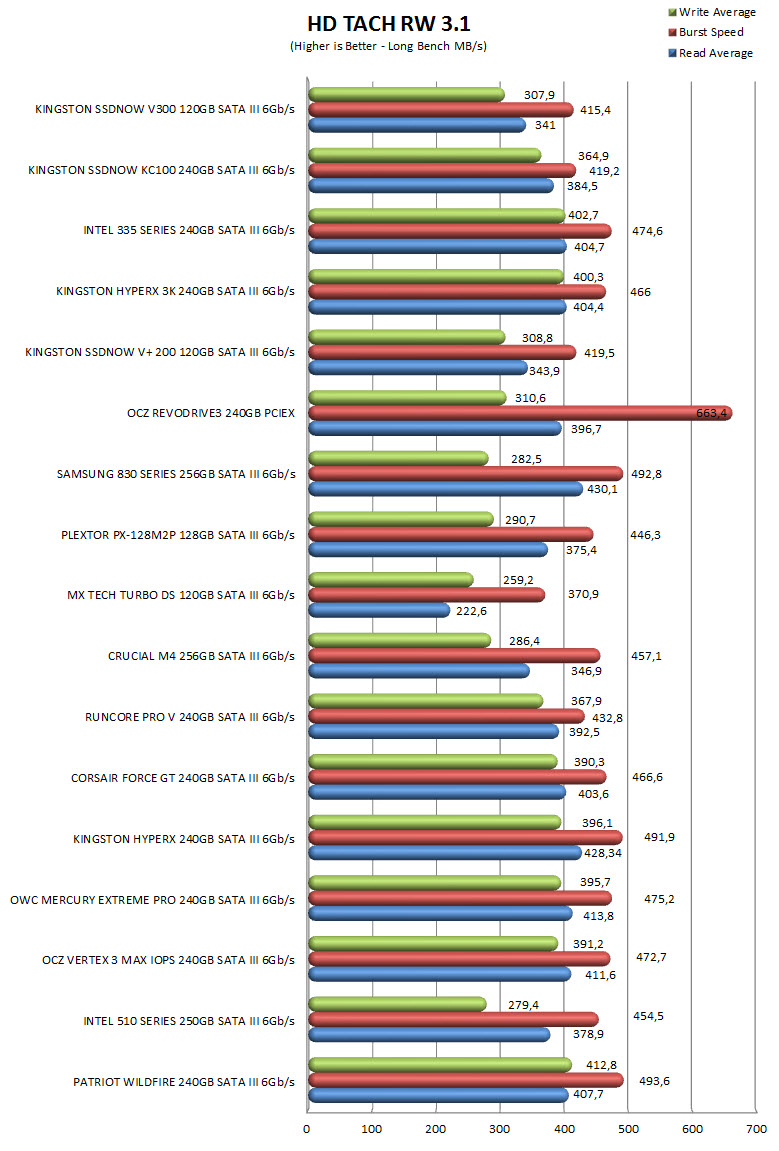INTRODUCTION

During this year's CES several manufacturers found the opportunity not only to promote already existing SSD models but also to introduce brand new ones most of which followed the standard SATA III connection while surprisingly only a few were PCIex based. The only reason i say that this surprised me is because personally i feel that the only serious performance jump I’ve seen between SSD models ever since the 2nd generation of controllers made its appearance roughly 2 years ago was when i started using PCIex based SSDs (just check the RevoDrive3 in our charts and keep in mind that this is an entry level PCIex based SSD). PCIex based SSDs however are still quite expensive and so in a way i can understand that manufacturers want to target the masses and not just enthusiasts and professionals. So with this in mind we decided to continue our SSD review spree by taking a thorough look on the latest mainstream (budget as some call it) SSD model introduced by Kingston a few weeks back, the SSDNow V300.
Kingston Technology Company, Inc. is the world’s independent memory leader. Founded in 1987 with a single product offering, Kingston® now offers more than 2,000 memory products that support nearly every device that uses memory, from computers, servers and printers to MP3 players, digital cameras and mobile phones. In 2009, the company's sales reached $4.1 billion. With global headquarters in Fountain Valley, California, Kingston employs more than 4,000 people worldwide. Regarded as one of the “Best Companies to Work for in America” by Fortune magazine, Kingston’s tenets of respect, loyalty, flexibility and integrity create an exemplary corporate culture. Kingston believes that investing in its people is essential, and each employee is a vital part of Kingston’s success. Kingston serves an international network of distributors, resellers, retailers and OEM customers on six continents. The company also provides contract manufacturing and supply chain management services for semiconductor manufacturers and system OEMs.
At the center of the brand new SSDNow V300 series of SSDs we see the SandForce SF-2281 controller (pretty much the most popular controller of 2012) which in turn is paired with the brand new 19nm NAND flash memory by Toshiba. Now since we've tested and used far too many SSD models using the SandForce SF-2281 controller it's a safe guess that the SSDNow V300 should have similar performance levels. We have no way of knowing however just how good the brand new 19nm NAND flash memory modules by Toshiba are and that is pretty much the wildcard in this test. Of course just like every SF-2281 based SSD out there the SSDNow V300 features RAISE (error correction, RAID like protection and recovery) DuraClass (advanced wear leveling and monitoring algorithms) and DuraWrite technology (up to 20x or more the flash endurance compared to other controllers) along with TRIM and intelligent garbage collection. On paper everything looks great, however time to see just how all these translate in performance.
SPECIFICATIONS AND FEATURES

PACKAGING AND CONTENTS
This time over Kingston ships the SSDNow V300 series inside a red/white box with a large product image at the front, read/write speeds, LSI SF logo, Kingston logo, 3 years warranty logo and a comparison with normal mechanical drives.
Installation instructions and several pictures showcasing the bundle contents is what we see at the rear.
Once again the entire bundle is placed inside a cardboard box (notice that Kingston made a small mistake and has placed the V200 series intro paper).
The bundle includes the SSDNow V300 SSD, 2.5" external USB 2.0 enclosure, 3.5" to 2.5" metal brackets, mounting screws, SATA power cable, SATA cable, CD with cloning software, DVD with installation instructions and a 7mm to 9.5mm adapter.
THE SSDNOW V300 120GB
Only the HyperX series of SSDs by Kingston feature an entirely different housing so the SSDNow V300 comes with the same one as pretty much every SSDNow model out there.
Naturally since the housing is the same as usual at the rear we see the warranty void sticker on top of one of the Torx tamper-proof screws.
The 4 pins placed right next to the SATA connector are used by Kingston for firmware updates.
The drive comes with 16 modules of Toshiba’s latest 19nm 8GB MLC Toggle Mode NAND flash memory and as you can see Kingston has replaced the Toshiba and SandForce logos with their own (first time we’ve seen that from Kingston).
TEST BED


TESTING METHODOLOGY
After roughly 5 years of testing sold state drives i have concluded that it's almost impossible for any single benchmark suite to accurately measure their performance and that's why in certain benchmark suites we see amazing read/write performance numbers with some drives while in others things are quite different. The reason behind this is that some benchmarking suites are configured to read and write random chunks of data while others read and write constant (sequential) ones. So that's why i have always used a very wide selection of benchmarking suites including AIDA64, HD Tach RW, HD Tune Pro, Crystal Disk Mark, Sisoftware Sandra Pro, AS SSD, IOmeter and ATTO. To get the most accurate results each test gets repeated a total of 6 times with the average performance numbers recorded into our charts.
Many people made inquiries about the charts ever since the last comparison so once again please do keep in mind that the Charts have the average performance numbers of each drive recorded and not the peak (highest) ones. Also although every single one of these programs can help potentials buyer choose the right drive for their needs you should also remember that from any kind of benchmark up to real world usage the gap is not small (and usually most differences will go unnoticed by most people). All tests were performed in a fresh Windows 7 Ultimate x64 installation with every update installed up to January 14th 2013.
TEST RESULTS - AIDA64 / ATTO


TEST RESULTS - HD TUNE PRO / HD TACH RW


TEST RESULTS - SISOFTWARE SANDRA PRO / CRYSTAL DISK MARK


TEST RESULTS - AS SSD / IOMETER


CONCLUSION

For a mainstream/budget model the SSDNow V300 performed very well but unfortunately (although expected from a mainstream model) it did fall back in most tests from both the SSDNow KC100 we tested a few days ago and of course the two currently available HyperX models again manufactured by Kingston. The surprise however came from the 19nm NAND flash memory modules by Toshiba since during our tests the SSDNow V300 reached read speeds which even surpassed the 550Mb/s mark (even if it was just a couple of times it's a lot more than the advertised 450MB/s). Unfortunately the drive is somewhat weak when it comes to random I/Os writes (compared to other SF-2281 based SSDs) and so here it even had a really hard time reaching its advertised speed of 55.000 I/Os.
The full SSD upgrade kit which we reviewed today is basically both the Notebook upgrade kit (2.5" external USB enclosure) and the Desktop upgrade kit (3.5" to 2.5" mounting kit) in one convenient package but after looking around for quite a bit i was unable to locate it on any of the popular online stores inside the USA. I did however find both the Notebook Upgrade Kit and the Desktop Upgrade Kit which currently retail for USD114.99 and USD119.99 (Newegg). However the complete SSD Upgrade Bundle is currently available inside the EU and goes for a price tag set at around 110Euros which is not bad at all (you can also get the SSDNow V300 120GB SSD alone for around USD95/90Euros). Long story short if you don't care/want/need about having the highest possible performance and you just want a very good SSD then the SSDNow V300 combines both very good performance levels and a low price tag and that's why it gets our Golden Award.

PROS
- Build Quality (SF-2281/ Internal Thermal Pads/ Toshiba 19nm NAND)
- Very Good Performance
- Bundle (2.5" USB Enclosure/ 3.5" bracket/ SATA III Cable/ SATA Power Connector/ Cloning Software)
- 3 Year Warranty With Free Technical Support
- Available Bundles (SSD/SSD+2.5" USB Enclosure/SSD+3.5" to 2.5" adapter)
- Price
CONS
- SandForce SF-2281 Controller Is Getting Old

 O-Sense
O-Sense
















.png)

